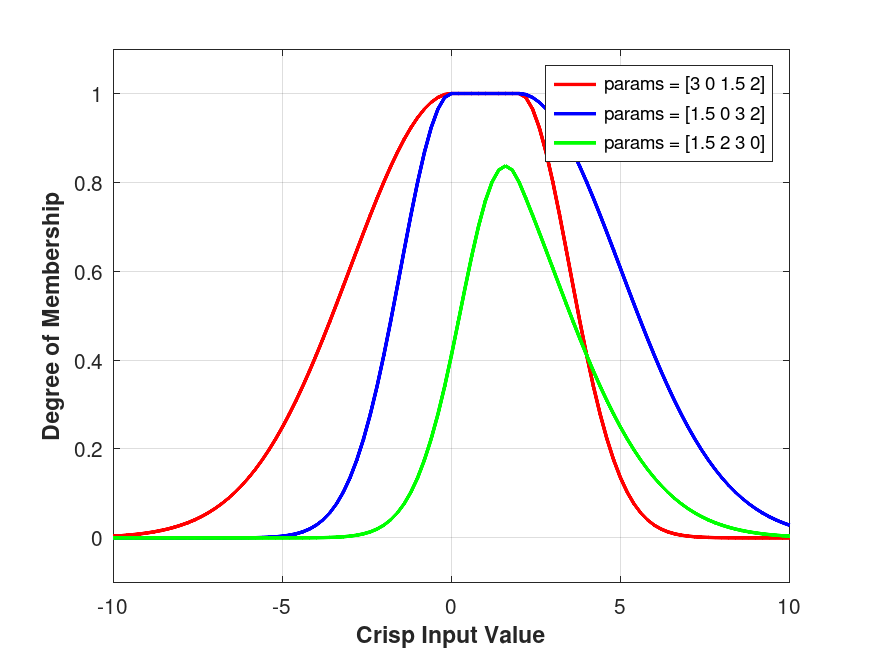Function Reference: gauss2mf
- Function File: y = gauss2mf (x, params)
- Function File: y = gauss2mf ([x1 x2 ... xn], [sig1 c1 sig2 c2])
For a given domain x and parameters params (or [sig1 c1 sig2 c2]), return the corresponding y values for the two-sided Gaussian composite membership function. This membership function is a smooth curve calculated from two Gaussian membership functions as follows:
Given parameters sig1, c1, sig2, and c2, that define two Gaussian membership functions, let:
f1(x) = exp((-(x - c1)^2)/(2 * sig1^2)) if x <= c1
1 otherwise
f2(x) = 1 if x <= c2
exp((-(x - c2)^2)/(2 * sig2^2)) otherwise
Then gauss2mf is given by:
f(x) = f1(x) * f2(x)
The argument x must be a real number or a non-empty vector of strictly increasing real numbers, and sig1, c1, sig2, and c2 must be real numbers. Gauss2mf always returns a continuously differentiable curve with values in the range [0, 1].
If c1 < c2, gauss2mf is a normal membership function (has a maximum value of 1), with the rising curve identical to that of f1(x) and a falling curve identical to that of f2(x), above. If c1 >= c2, gauss2mf returns a subnormal membership function (has a maximum value less than 1).
To run the demonstration code, type "demo gauss2mf" (without the quotation marks) at the Octave prompt.
See also: dsigmf, gaussmf, gbellmf, pimf, psigmf, sigmf, smf, trapmf, trimf, zmf
Example: 1
x = -10:0.2:10;
params = [3 0 1.5 2];
y1 = gauss2mf(x, params);
params = [1.5 0 3 2];
y2 = gauss2mf(x, params);
params = [1.5 2 3 0];
y3 = gauss2mf(x, params);
figure('NumberTitle', 'off', 'Name', 'gauss2mf demo');
plot(x, y1, 'r;params = [3 0 1.5 2];', 'LineWidth', 2);
hold on ;
plot(x, y2, 'b;params = [1.5 0 3 2];', 'LineWidth', 2);
hold on ;
plot(x, y3, 'g;params = [1.5 2 3 0];', 'LineWidth', 2);
ylim([-0.1 1.1]);
xlabel('Crisp Input Value', 'FontWeight', 'bold');
ylabel('Degree of Membership', 'FontWeight', 'bold');
grid;
hold;
|
